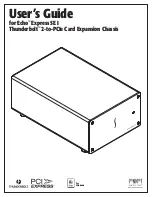
1-7
Cisco ASA Series CLI Configuration Guide
Chapter 1 Setting General VPN Parameters
Understanding Load Balancing
hostname(config-tunnel-general)# no nat-assigned-to-public-ip
Displaying VPN NAT Policies
Address translation uses the underlying object NAT mechanisms; therefore, the VPN NAT policy
displays just like manually configured object NAT policies. This example uses 95.1.226.4 as the assigned
IP and 75.1.224.21 as the peer’s public IP:
prompt# show nat
Auto NAT Policies (Section 2)
1 (outside) to (inside) source static _vpn_nat_95.1.226.4 75.1.224.21
translate_hits = 315, untranslate_hits = 315
prompt# show nat detail
Auto NAT Policies (Section 2)
1 (outside) to (inside) source static _vpn_nat_95.1.226.4 75.1.224.21
translate_hits = 315, untranslate_hits = 315
Source - Origin: 95.1.226.4/32, Translated: 75.1.224.21/32
Outside
is the interface to which the AnyConnect client connects and
inside
is the interface specific to
the new tunnel group.
Note
Since VPN NAT policies are dynamic and not added to the configuration, the VPN NAT object and NAT
policy are hidden from the show run object and show run nat reports.
Understanding Load Balancing
If you have a remote-access configuration in which you are using two or more ASAs or VPN
Concentrators connected on the same network, you can configure these devices to share their session
load. This feature is called
load balancing
. To implement load balancing, you group together logically
two or more devices on the same private LAN-to-LAN network, private subnet, and public subnet into a
virtual cluster.
All devices in the virtual cluster carry session loads. Load balancing directs session traffic to the
least-loaded device in the cluster, which distributes the load among all devices. It makes efficient use of
system resources and provides increased performance and high availability.
One device in the virtual cluster, the
virtual cluster master
, directs incoming traffic to the other devices,
called
backup devices
. The virtual cluster master monitors all devices in the cluster, keeps track of how
busy each is, and distributes the session load accordingly. The role of virtual cluster master is not tied to
a physical device; it can shift among devices. For example, if the current virtual cluster master fails, one
of the backup devices in the cluster takes over that role and immediately becomes the new virtual cluster
master.
The virtual cluster appears to outside clients as a single
virtual cluster IP address
. This IP address is not
tied to a specific physical device. This address belongs to the current virtual cluster master, which makes
it virtual. A VPN client attempting to establish a connection connects first to this virtual cluster IP
address. The virtual cluster master then sends back to the client the public IP address of the least-loaded
available host in the cluster. In a second transaction (transparent to the user), the client connects directly
to that host. In this way, the virtual cluster master directs traffic evenly and efficiently across resources.
Summary of Contents for 5505 - ASA Firewall Edition Bundle
Page 28: ...Glossary GL 24 Cisco ASA Series CLI Configuration Guide ...
Page 61: ...P A R T 1 Getting Started with the ASA ...
Page 62: ......
Page 219: ...P A R T 2 Configuring High Availability and Scalability ...
Page 220: ......
Page 403: ...P A R T 2 Configuring Interfaces ...
Page 404: ......
Page 499: ...P A R T 2 Configuring Basic Settings ...
Page 500: ......
Page 533: ...P A R T 2 Configuring Objects and Access Lists ...
Page 534: ......
Page 601: ...P A R T 2 Configuring IP Routing ...
Page 602: ......
Page 745: ...P A R T 2 Configuring Network Address Translation ...
Page 746: ......
Page 845: ...P A R T 2 Configuring AAA Servers and the Local Database ...
Page 846: ......
Page 981: ...P A R T 2 Configuring Access Control ...
Page 982: ......
Page 1061: ...P A R T 2 Configuring Service Policies Using the Modular Policy Framework ...
Page 1062: ......
Page 1093: ...P A R T 2 Configuring Application Inspection ...
Page 1094: ......
Page 1191: ...P A R T 2 Configuring Unified Communications ...
Page 1192: ......
Page 1333: ...P A R T 2 Configuring Connection Settings and QoS ...
Page 1334: ......
Page 1379: ...P A R T 2 Configuring Advanced Network Protection ...
Page 1380: ......
Page 1475: ...P A R T 2 Configuring Modules ...
Page 1476: ......
Page 1549: ...P A R T 2 Configuring VPN ...
Page 1550: ......
Page 1965: ...P A R T 2 Configuring Logging SNMP and Smart Call Home ...
Page 1966: ......
Page 2059: ...P A R T 2 System Administration ...
Page 2060: ......
Page 2098: ...1 8 Cisco ASA Series CLI Configuration Guide Chapter 1 Troubleshooting Viewing the Coredump ...
Page 2099: ...P A R T 2 Reference ...
Page 2100: ......





































